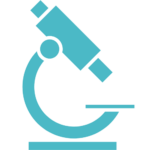The Olive Ridley Project (ORP) is on a mission to protect sea turtles and their habitats. Sea turtles have been around since before the extinction of the dinosaurs 65 million years ago. There were once many species, but now there are only seven left. Sadly, six of the sea turtle species fall under IUCN’s category of being at risk of extinction.
Conservation is the preservation, protection, or restoration of the natural world. Sea turtle conservation, therefore, focuses on the protection and preservation of sea turtles and their habitats.
Whilst much of conservation work is deep rooted in biology, it also utilises skills from a variety of fields, such as the social sciences, political sciences, economics, and even psychological sciences.
Working to protect particular species and ecosystems from human threats, or helping governments and policy makers to create laws to protect certain areas, requires knowledge from these disciplines.
This multidisciplinary approach is the only way to ensure that sea turtles, and the environment in which they live, can continue on into the future.
Our Approach To Sea Turtle Conservation
We take a multifaceted and holistic approach to protecting sea turtles and their habitats. This includes:

Rescue and rehabilitation of injured and sick sea turtles at our rescue and rehabilitation facilities.

Scientific research to fill data gaps in sea turtle knowledge with the aim to inform sea turtle conservation policy

Education and community outreach to increase awareness about the importance sea turtles play in a healthy ocean ecosystem and the threats they face.
The First Law of ecology states that ‘everything is connected to everything else’. Sea turtles are the ultimate symbol of this law. They play a vital role in maintaining the health of the world’s ocean as prey, consumer, competitor, and host.
Humans rely on the ocean for many things including food, fresh water and oxygen. Saving our ocean is a question of human survival. If sea turtles become extinct, the whole marine ecosystem — the planet’s largest — will weaken.
The amount of stress an ecosystem can handle before it collapses is determined by its many interconnections; sea turtles being one integral such connection.
The good news is that the ocean has an immense capacity to heal itself and we know what to do. Everyone can help and you can choose to be part of the solution by supporting ORP.
UN Sustainable Development Goals
ORP’s objectives and actions entirely fit within the United Nations (UN) Sustainable Development Goals (SDGs), a collection of 17 goals designed to be a “blueprint to achieve a better and more sustainable future for all”. We strive ourself on working at a multidisciplinary level to create positive change within sea turtle conservation, with work specifically fitting into goals SDG 13 (Climate Action), SDG 14 (Life under Water) and SDG 17 (Partnerships).
Of particular focus is goal 14, which specifically aims to: ‘Prevent and significantly reduce marine pollution of all kinds, in particular from land-based activities, including marine debris and nutrient pollution’, ‘Sustainably manage and protect marine and coastal ecosystems to avoid significant adverse impacts, including by strengthening their resilience, and take action for their restoration’.




